
WE OFFER THE FOLLOWING CLASSES
We also offer summer camp and winter camp
HOMEWORK ASSISTANCE
Our specialized teachers will supervise and help students with their school assignments.
All homework will be up to date and students will receive all the help and guidance needed.
ASISTENCIA TAREA ESCOLAR
Nuestros maestros especializados supervisarán y ayudarán a los estudiantes con sus tareas escolares.
Toda la tarea estará actualizada y los estudiantes recibirán toda la ayuda y orientación necesarias.



MUSIC
Class oriented to the musical development of students, emphasizing the tuning, rhythm and interpretation. It allows students to familiarize themselves with various instruments such as piano, guitar, percussion and wind instruments.
MÚSICA
Clase orientada al desarrollo musical de los alumnos, haciendo hincapié en la afinación, el ritmo y la interpretación. Permite al alumno familiarizarse con diversos instrumentos tales como el piano, la guitarra, instrumentos de percusión y de viento.



MUSIC INITIATION (3 to 5 years old)
Class that aims to bringing children closer to music through rhythm and movement. Through body expression children will enjoy a space where they can experience the sounds produced by body and instruments. The awakening of musical sensibility in children from an early age has many benefits. It improves the academic level because the brain is activated in ways that make it more prone to learn new content. It increases memory and the ease of retaining data. By having to execute the appropriate notes at the precise moments, the coordination between the brain and limbs is increased, developing motor skills, which is reflected in many other aspects. It also increases patience and sociability of the students.
INICIACIÓN MUSICAL (3 a 5 años)
Clase que pretende acercar a los niños a la música mediante del ritmo y el movimiento. A través de la expresión corporal Los niños disfrutaran de un espacio en el que podrán experimentar los sonidos producidos por el cuerpo y los instrumentos. El despertar la sensibilidad musical en los niños desde edades tempranas tiene muchos beneficios. Mejora el nivel académico pues el cerebro se activa en formas que lo hacen más propenso a aprender nuevos contenidos. Se incrementa la memoria y la facilidad para retener datos. Al tener que ejecutar las notas adecuadas en los momentos precisos se incrementa la coordinación entre cerebro y extremidades, desarrollando la motricidad, lo que se refleja en muchos otros aspectos. También se incrementa la paciencia y la sociabilidad de los alumnos.

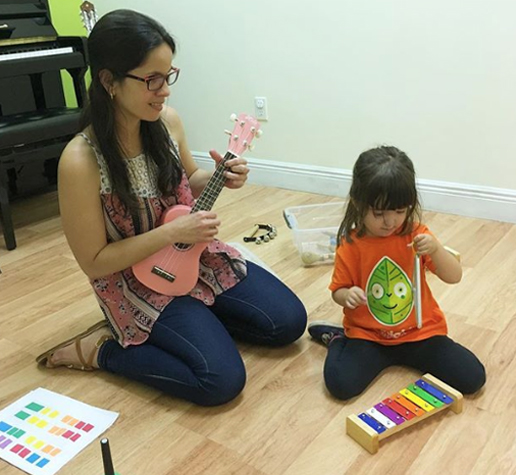

PIANO
The word piano is a shortening of the Italian term “pianoforte” composed of two terms in itself, “piano” which means “soft” and “forte” which means “strong”. This instrument is classified as percussion and percussive strings.
Although the piano was created from the mechanisms of other instruments, the oldest one being the zither, originally from Africa and Southeast Asia, created approximately in 3000 B.C. The creation of the piano as we know it today is attributed to Bartolomeo Cristofi, curator of instruments of the Médici family. Bartolomeo specialized in the creation of stringed instruments with keyboard whose function was to percuss such strings and there is an inventory of the year 1709 of his workshop in Florence in which the existence of a piano is mentioned.
The piano is a very representative instrument of musical romanticism, very important among the most affluent classes in the seventeenth and nineteenth centuries, when the nobility and aristocracy liked to attend the musical performances of the great composers and their immortal works… Geniuses like Chopin, Mozart or Beethoven among others.
PIANO
La palabra piano es un acortamiento del término italiano “pianoforte” compuesto por dos términos en sí, “piano” que significa “suave” y “forte” que significa “fuerte”. Este instrumento está clasificado como de percusión y cuerdas percutidas.
Aunque el piano fue creado a partir de los mecanismos de otros instrumentos, siendo el más antiguo la cítara, originaria de África y sudeste Asiático, creada aproximadamente en 3000 A.C. la creación del piano como hoy lo conocemos se atribuye a Bartolomeo Cristofi, conservador de instrumentos de la familia Médici. Bartolomeo se especializo en la creación de instrumentos de cuerda con teclado cuya función era la de percutir tales cuerdas y hay un inventario del año 1709 de su taller en Florencia en el que se menciona la existencia de un piano.
El piano es un instrumento muy representativo del romanticismo musical, muy importante entre las clases más acomodadas en los siglos XVII y XIX, cuando la nobleza y aristocracia gustaban de asistir a las representaciones musicales de los grandes compositores y sus inmortales obras… Genios como Chopin, Mozart o Beethoven entre otros.


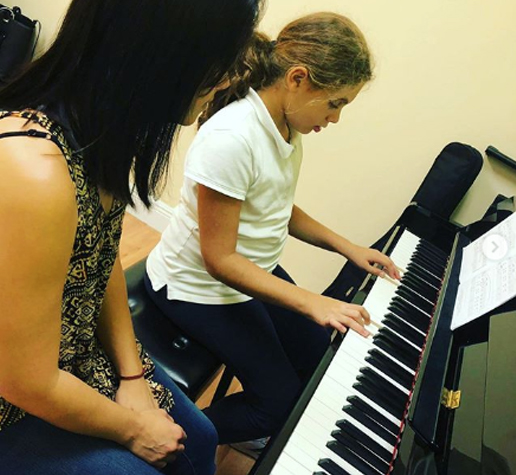
GUITAR
The guitar is a string instrument, made mainly of wood. It is an instrument so old that it is not very clear what its origin is. This instrument has evolved with every era, from the classical guitar, to the most modern electric guitars. It is an instrument used in every musical genre, from flamenco, blues, rock and roll and heavy metal among others. It is a very affordable instrument, which can be taken anywhere, and overall is a great companion to cheer up any event, be it a party, camping or travel.
GUITARRA
La guitarra es un instrumento de cuerda, hecho principalmente de madera. Es un instrumento tan antiguo que no está muy claro cuál es su origen. Este instrumento ha evolucionado con cada época, desde la guitarra clásica, hasta las más modernas guitarras eléctricas. Es un instrumento usado en todo género musical, desde el flamenco, el blues, rock and roll y el heavy metal entre otros. Es un instrumento muy asequible, que se puede llevar a cualquier sitio, y es genial para acompañar y animar cualquier evento, ya sea una fiesta, acampada o viaje.
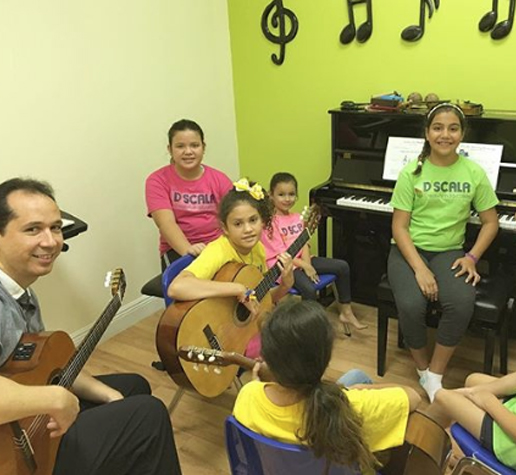
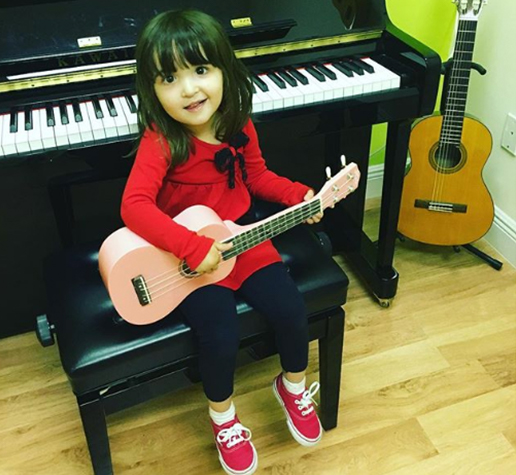

SINGING
Singing sounds so simple, you just start singing any song you like. Singing is producing musical sounds with your voice using vocal techniques. A person who sings is called a singer or vocalist. A singer can sing as a soloist or accompanied of another singers, like in a choir, or with an ensemble of musicians, like in a band. There are so many singing styles, from Opera, to religious music, jazz, gospel, por, rock, rap…
We all can sing, some better than others, but excellence in singing requieres dedication, istruction and practice, achieving more vocal range, stronger, more clear voices. Professional train all their lives with voice teachers and coaches.
CANTO
Cantar es muy sencillo. Simplemente comienzas a cantar cualquier canción que te guste. Cantar es producir sonidos musicales con tu voz usando técnicas vocales. Una persona que canta se llama cantante o vocalista. Un cantante puede cantar como solista o acompañado de otros cantantes, como en un coro, o con un conjunto de músicos, como en una banda. Hay tantos estilos de canto, desde ópera hasta música religiosa, jazz, góspel, por, rock, rap …
Todos podemos cantar, algunos mejor que otros, pero la excelencia en el canto requiere dedicación, instrucción y práctica, logrando más rango vocal, voces más fuertes y más claras. Los cantantes profesionales entrenan toda su vida con profesores de voz y entrenadores vocales.

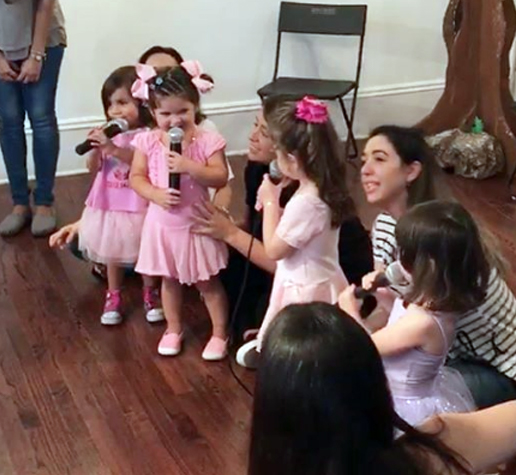

VIOLIN
The word violin comes from Italy, and is diminutive of viola, another similar string instrument. A violin is essentially composed of a soundboard, a handle or shaft and a pegbox. The strings of the violin, which formerly were made of animal guts, are tensioned from the soundboard to the pegbox. In addition, the violinist will use a bow, a narrow rod with a soft curve and a ribbon made up of horsetail mane. The rubbing of the ribbon in the bow on the strings of the violin produces the sounds so characteristic of this beautiful instrument.
The origin of this instrument is remote to very ancient times, fusion of cultures and very diverse musical mechanisms. Although the violin as such already existed in the seventeenth century, it was not until 1607 when Claudio Monteverdi gave it a popularity that until then it did not have, increasing the prestige of this incredible string instrument. Some important manufacturers of this instrument began to emerge, among them, in the Italian town of Cremona, Antoni Stradivari, the manufacturer of the sublime Stradivarius violins. It is in the nineteenth century, especially in the Baroque era when the Golden Age of the violin begins.
VIOLÍN
La palabra violín proviene del italiano, y es diminutivo de viola, otro instrumento de cuerda similar. Un violín está compuesto esencialmente por una caja de resonancia, un mango o astil y un clavijero. Las cuerdas del violín, que antiguamente se hacían con tripa de animal, van tensadas desde la caja de resonancia hasta el clavijero. Además, el violinista usara un arco, una vara estrecha de curva suave con una cinta compuesta por crines de cola de caballo. La frotación de la cinta en el arco sobre las cuerdas del violín producen los sonidos tan característicos de este bello instrumento.
La procedencia de este instrumento se remota a tiempos muy lejanos, fusión de culturas y de mecanismos musicales muy diversos. Aunque el violín como tal ya existía en el siglo XVII, no fue hasta 1607 cuando Claudio Monteverdi le dio un renombre que hasta entonces no tenia, aumentando el prestigio de este increíble instrumento de cuerda. Grandes fabricantes de este instrumento empezaron a emerger, entre ellos, en la localidad italiana de Cremona, Antoni Stradivari, el fabricante de los sublimes violines Stradivarius. Es en el siglo XIX, sobre todo en la época del Barroco cuando comienza la Edad de Oro del violín.



ACTING
Acting is the art of interpreting characters telling stories either in a play, or on the big screen. In ancient Greece theatrical plays were performed for the enjoyment of the spectators, the first known actor being a Greek man named Thespis, born in Icaria in the sixth century BC. The acting student requires a lot of dedication and improvisation. in their preparation, actors will work hard on textual interpretation, vocalization and movement.
ACTUACIÓN
La actuación es el arte de interpretar personajes contando relatos ya sea en una obra teatral, o en la gran pantalla. En la antigua Grecia se representaban obras teatrales para el disfrute de los espectadores siendo el primer actor conocido un hombre griego llamado Tespis, nacido en Icaria en el siglo VI antes de Cristo. La actuación requiere mucha dedicación e improvisación. Los actores en su preparación trabajaran mucho la interpretación textual, la vocalización y movimiento.



KARATE
It has its origin in the sixteenth century, in the martial techniques of the inhabitants in the Ryukyu Islands (now Okinawa). The word Karate is composed of two words, “Kara” means “empty” and “te” means “Hand”, “The path of the empty hand”. In itself, Karate is a fusion of Okinawa’s natives fighting techniques as well as some styles of Chinese martial arts and other disciplines of the Asian Southeast. It was used by the guards of the last king of Okinawa to defend against armored warriors, the samurai, who invaded their territories.
The martial art of Karate is made up of punches, blockages, kicks and open hand punches, as well as sweeps, throws, demolitions and some joint dislocations. In the karate blow, speed, strength, balance and breathing merge together. A balance between tension and relaxation, and the balanced use of body weight to generate the greatest impact on each stroke, this concept is called “Ikken Hikatsu” or “a stroke, a death.”
The practice of Karate is very beneficial not only because it is an excellent physical activity for all types of people, it is also a philosophy of life. Karate stimulates the mind, and promotes self-esteem and self-confidence.
KARATE
Tiene su origen en el siglo XVI, en las técnicas marciales de los habitantes de las islas Ryukyu (actualmente Okinawa). La palabra Karate es compuesta, “Kara” significa “vacío” y “te” significa “Mano”, “El camino de la mano vacía”. En sí, el Karate es una fusión de las técnicas de lucha nativas de Okinawa así como de algunos estilos de artes marciales chinas y de otras disciplinas del sureste asiático. Lo usaban los guardias del último rey de Okinawa para defenderse de los guerreros con armadura, los samurái, que invadían sus territorios.
El arte marcial del Karate se compone de golpes de puno, bloqueos, patadas y golpes de mano abierta, además de barridos, lanzamientos, derribos y algunas luxaciones articulares. En los golpes se unen la rapidez, fuerza, equilibrio y respiración. Un equilibrio entre tensión y relajación, y el uso equilibrado del peso corporal para generar el mayor impacto en cada golpe, a este concepto se le llama “Ikken Hikatsu” o “un golpe, una muerte”.
La práctica del Karate es muy beneficiosa no solo por ser una excelente actividad física para todo tipo de personas, es además una filosofía de vida, que estimula la mente. El Karate promueve la autoestima y la confianza en uno mismo.

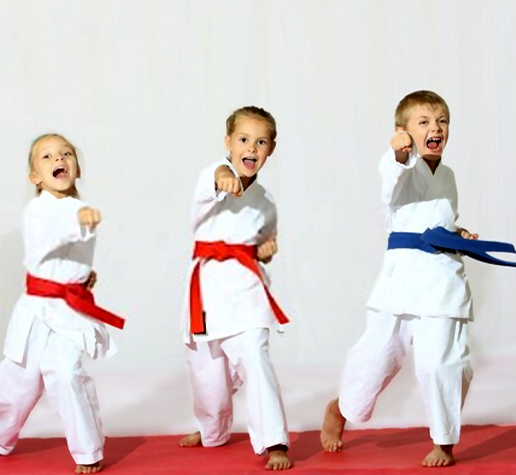
FENCING
Fencing discipline is the art of defense and attack with a sword or similar weapon. Its rules and techniques have their origin in training for the efficient use of swords in duels, so typical in ancient Europe. In these duels opponents settled arguments with each other as well as matters of honor. Fencing as a sports discipline has its origin at the end of the Renaissance, and simultaneously throughout all Europe. It requires concentration, speed, elegance and strategy for its proper execution.
ESGRIMA
La disciplina de la esgrima es el arte de la defensa y ataque con espada o arma blanca similar. Sus reglas y técnicas tienen su origen en el entrenamiento para el uso de las espadas en los duelos tan típicos en la Europa de la antigüedad, duelos en los que los contrincantes ajustaban cuentas entre sí y saldaban asuntos de honor. El esgrima como disciplina deportiva tiene su origen a finales del Renacimiento, y de forma simultánea en toda Europa. Requiere de concentración, rapidez, elegancia y estrategia para su buena ejecución.



ROBOTICS (Science)
The word robot comes from the Czech word “robota” which means forced labor or worker, and was translated into English as “robot.” The idea of robotics is the construction of artifacts that perform tedious tasks so that humans do not have to perform them. The word “robotics” was created by science fiction writer Isaac Asimov. It was the science that studied robots, human creations that were sent to visit new worlds, and performed automatic works for their creators.
Who has not dreamt in his childhood with androids from the future, living among humans in space stations. The future is now, the field of robotics is advancing at high speed and artificial intelligence plays a more important role in our lives every day.
ROBÓTICA (Ciencia)
La palabra robot proviene de la palabra checa “robota” que significa trabajos forzados o trabajador, y fue traducida al inglés como “robot”. La idea de la robótica es la construcción de artefactos que realicen las tareas tediosas para que no tengan que realizarlas los humanos. La palabra “robótica” la creo el escritor de ciencia ficción Isaac Asimov. Era la ciencia que estudiaba los robots, creaciones humanas que se enviaban a visitar nuevos mundos, y realizaban trabajos automáticos para sus creadores.
Quien no ha soñado en su infancia con androides del futuro, conviviendo con humanos en estaciones espaciales. El futuro es ahora, la robótica avanza a pasos agigantados y cada día la inteligencia artificial juega un papel más importante en nuestras vidas.



